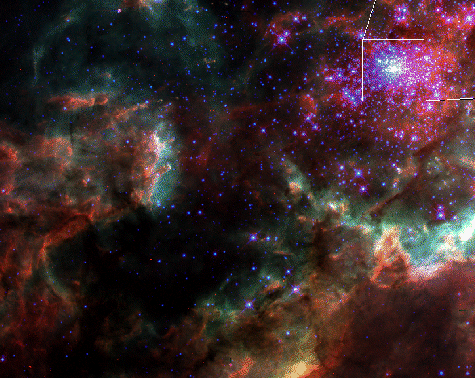Credit & Copyright: WFPC 2,
Hubble Space
Telescope
Explanation:
In the center of
30 Doradus
lies a huge cluster of the largest, hottest,
most massive stars known. The center of this cluster, known as
R136, is
boxed in the upper right portion of the above picture. The gas and
dust
filling the rest of the picture is predominantly ionized
hydrogen from the
emission nebula
30
Doradus. R136 is composed of thousands of hot blue
stars, some about 50 times more massive than our
Sun. 30 Doradus and R136
lie in the
LMC - a satellite galaxy to our own
Milky Way Galaxy. Although
the ages of stars in R136 cause it to be best described as an
open cluster,
R136's density will likely make it a low mass
globular cluster in a
few billion years.
1999 2000 2001 2002 2003 2004 2005 2006 2007 2008 2009 2010 2011 2012 2013 2014 2015 2016 2017 2018 2019 2020 2021 2022 2023 2024 2025 |
Январь Февраль Март Апрель Май Июнь Июль Август Сентябрь Октябрь Ноябрь Декабрь |
NASA Web Site Statements, Warnings, and Disclaimers
NASA Official: Jay Norris. Specific rights apply.
A service of: LHEA at NASA / GSFC
& Michigan Tech. U.
|
Публикации с ключевыми словами:
30 Doradus - эмиссионная туманность - Золотая Рыба - Большое Магелланово Облако - Рассеянное скопление
Публикации со словами: 30 Doradus - эмиссионная туманность - Золотая Рыба - Большое Магелланово Облако - Рассеянное скопление | |
См. также:
Все публикации на ту же тему >> | |
